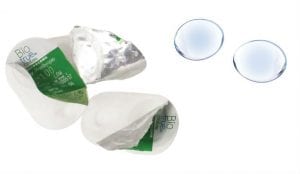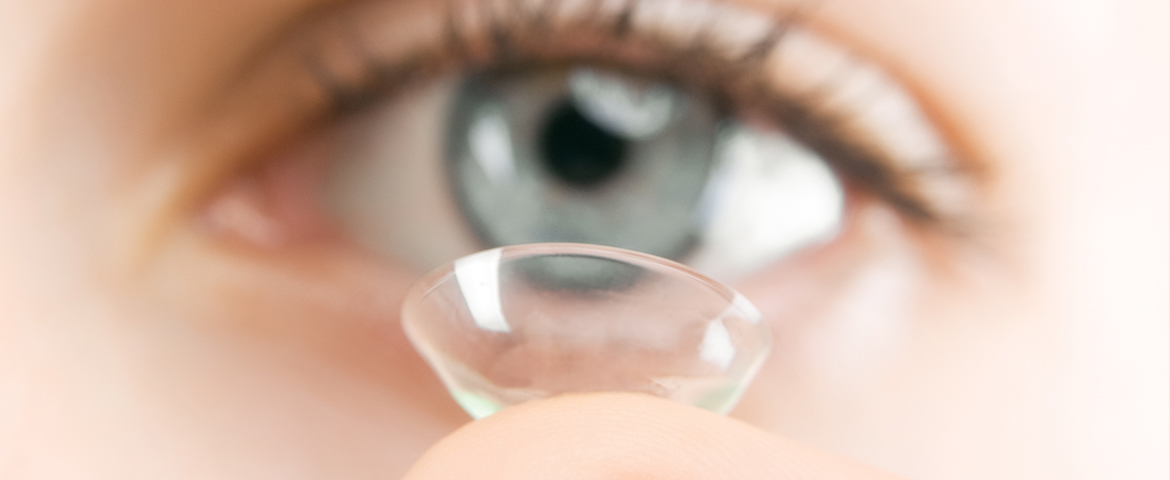Contact lenses revolutionized the world of vision care back in 1971 when the first mass-produced soft lenses were introduced by Bausch + Lomb, adding an extra bit of convenience for those in need of vision correction. However, even though the materials they are made with are generally composed of recyclable plastic and/or foil, they are too small for most standard recycling centers. Today, Bausch + Lomb is looking to change that with their ONE by ONE recycling program, which gives consumers a quick and easy way to recycle their contact lenses, blister packs, and foil, free of charge. We spoke with Gina Wesley, O.D., an optometrist from Complete Eye Care in Minnesota and a proponent of the program, about the initiative and what it means for the future of sustainable eye care.

Innovation & Tech Today: Can you explain what the Bausch + Lomb ONE by ONE recycling program is hoping to accomplish?
Gina Wesley: For the first time, contact lens wearers can recycle their blister packs, top foil, and contact lenses through the Bausch + Lomb ONE by ONE Recycling program, which is in collaboration with TerraCycle. Many of my patients have been concerned about their contact lens waste, particularly those who wear daily disposable contact lenses, which are single-use lenses that are removed and discarded at the end of each day. Now my patients, as well as anyone else in the U.S., can recycle any contact lens, its used blister pack and top foil, no matter the brand, through this program.
Innovation & Tech Today: How much waste has the program collected so far?
GW: To date, the program, which first launched in November 2016, has recycled more than 790,000 units of contact lenses and blister packs, diverting over 4,700 lbs. of waste from landfills.
Not only is the program good for the environment, but it’s also helping to give back. For every pound of accepted packaging sent through this program, a $1 donation is made to Optometry Giving Sight,, an organization that helps provide eye exams, glasses, and eye surgeries all around the world, because the leading cause of vision disruption across the world is simply uncorrected vision and access to eye care.
Innovation & Tech Today: Can you explain why these materials can’t be recycled through standard recycling centers?
GW: Bausch + Lomb is truly innovative in their approach to offering this program. There’s nothing else out there that’s like this and for years I’ve had patients ask if they can recycle these materials through their standard recycling process. Due to the size of contact lenses and their packaging, these materials get filtered out at recycling facilities and directed to the waste stream, contributing to landfills across the United States. Now, with the ONE by ONE program, there’s the ability for any contact lens wearer to recycle their used materials. In doing so, they’re not only helping to save the earth, but they’re also helping people get eye care in underprivileged areas around the world. I’ve had a really good response with patients who have done really well in bringing their lenses in to our office for recycling. Our office is also fitting patients in contact lenses all the time. Once we started this program, I could barely believe how much waste that we generate on our own each and every day, let alone the rest of the nation and world for that matter.
I&T Today: Is there any difference between, say, a recycled contact lens and a non-recycled contact lens?
GW: To clarify, contact lenses are not made from recycled materials, but rather after being used, they are recycled for use in other ways. The difference is where the lens ends up after its use. A non-recycled contact lens is technically a piece of specialized plastic that’s going to sit in a landfill and probably last for a long time before it would ever be decomposed, just like regular plastics. A contact lens that is recycled will end up being remolded into other recycled products.
I&T Today: What kind of response have you gotten? Is it something that you’ve been talking to the public about a lot or is this something that is kind of just one of those under the radar sustainability initiatives that Bausch + Lomb is engaged in?
GW: I’ve received really positive feedback from my patients, especially because many of them have been asking about a program like this for years. It’s been really fantastic to be able to have a solution to finally offer them. I always say, “You’ve asked about recycling for your contact lenses and now there’s the ONE by ONE program from Bausch + Lomb.” People are really excited, so I’m not keeping it flying under the radar. I’m telling all my patients about it and encouraging them to save their contact lenses, used blister packs and top foil so they can be properly recycled through this program.
 I&T Today: If I’m a contact lens wearer, how do I go about recycling them?
I&T Today: If I’m a contact lens wearer, how do I go about recycling them?
GW: Bausch + Lomb offers a couple different ways for anyone to easily participate in this program.
For starters, optometry offices that are registered with the ONE by ONE recycling program are provided large recycling bins, which we feature in all of our exam rooms within our practice. Our office uses these bins to collect used contact lenses and the blister packs and top foil they come in, and we also encourage our patients to do the same – stockpile their used contact lens materials and bring them into our office. Once the bins are full, we print out the free shipping labels provided by Bausch + Lomb and mail the materials in to be properly recycled. Our patients and any other contact lens wearer can also recycle their contact lenses right from home by printing out a free shipping label from the Bausch + Lomb website, www.bauschrecycles.com. I think it’s really inspiring what they’ve done.
If you visit the Bausch + Lomb ONE by ONE website at www.bauschrecycles.com, you can view a map of the United States, which shows all of the optometry offices that are currently involved in this program – more than 2,000 currently. I think that alone speaks to the growth of the program and what it means to eye care professionals and patients alike across the country. I think that it’s a worthy cause and it’s a really unique program in what it offers in terms of not only reducing waste but helping other people around the world.
Featured image courtesy of Wikimedia/Etan J. Tal










